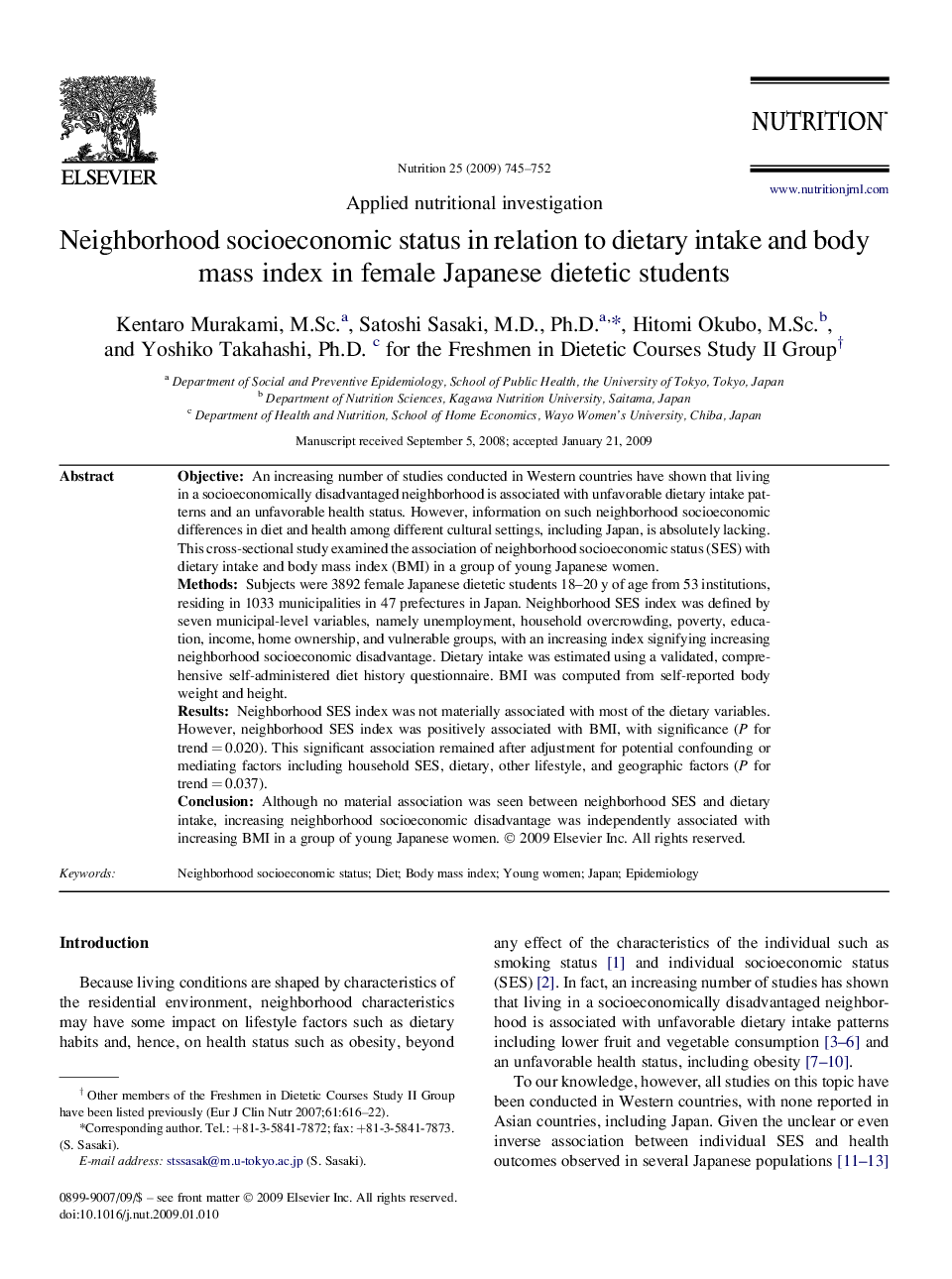| کد مقاله | کد نشریه | سال انتشار | مقاله انگلیسی | نسخه تمام متن |
|---|---|---|---|---|
| 3277253 | 1589681 | 2009 | 8 صفحه PDF | دانلود رایگان |

ObjectiveAn increasing number of studies conducted in Western countries have shown that living in a socioeconomically disadvantaged neighborhood is associated with unfavorable dietary intake patterns and an unfavorable health status. However, information on such neighborhood socioeconomic differences in diet and health among different cultural settings, including Japan, is absolutely lacking. This cross-sectional study examined the association of neighborhood socioeconomic status (SES) with dietary intake and body mass index (BMI) in a group of young Japanese women.MethodsSubjects were 3892 female Japanese dietetic students 18–20 y of age from 53 institutions, residing in 1033 municipalities in 47 prefectures in Japan. Neighborhood SES index was defined by seven municipal-level variables, namely unemployment, household overcrowding, poverty, education, income, home ownership, and vulnerable groups, with an increasing index signifying increasing neighborhood socioeconomic disadvantage. Dietary intake was estimated using a validated, comprehensive self-administered diet history questionnaire. BMI was computed from self-reported body weight and height.ResultsNeighborhood SES index was not materially associated with most of the dietary variables. However, neighborhood SES index was positively associated with BMI, with significance (P for trend = 0.020). This significant association remained after adjustment for potential confounding or mediating factors including household SES, dietary, other lifestyle, and geographic factors (P for trend = 0.037).ConclusionAlthough no material association was seen between neighborhood SES and dietary intake, increasing neighborhood socioeconomic disadvantage was independently associated with increasing BMI in a group of young Japanese women.
Journal: Nutrition - Volume 25, Issues 7–8, July–August 2009, Pages 745–752